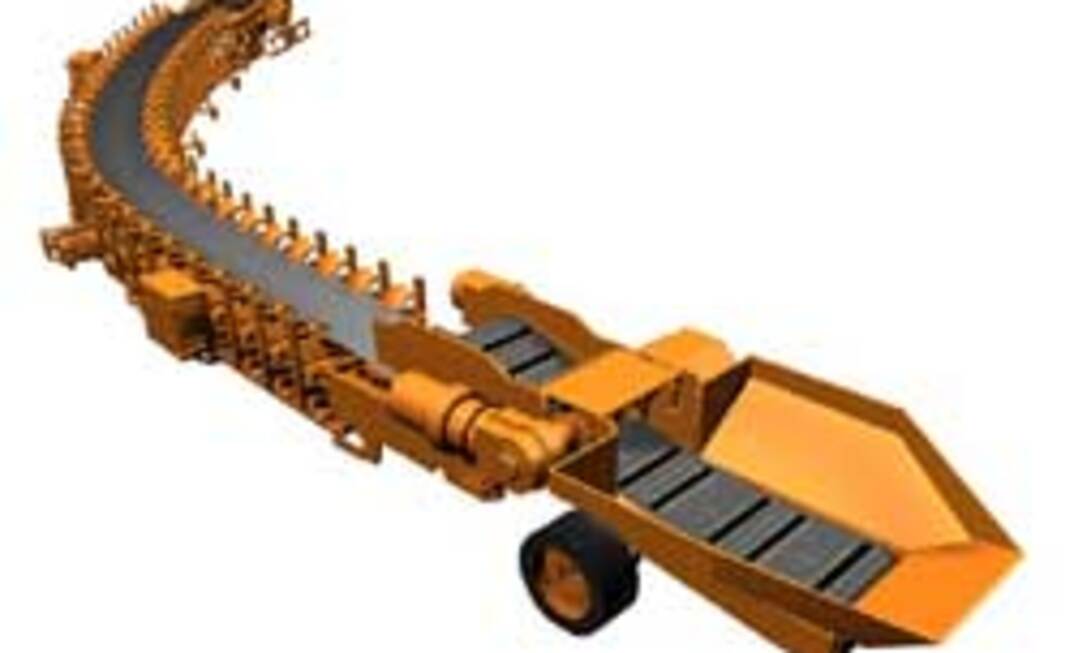Published in September 2005 Australian Longwall Magazine
With most existing haulage systems, where a bolter miner is serviced by shuttle cars, haulage delays are common. Installation of roof support used to be the major delay, but as this has improved, haulage has become the bottleneck. Other delays emanate from the need to carry out rock dusting and install secondary roof support.
At present, leading original equipment manufacturers (OEMs) of underground coal mining equipment are tackling this problem by offering solutions that provide continuous haulage, with some more advanced than others.
Joy Mining Machinery
Joy has been working on continuous haulage for at least 20 years. The company’s latest version is the Flexible Conveyor Train (FCT), version four, otherwise known as the 4FCT. Two of these machines have been operating successfully in a US bord and pillar mine since 2002.
The 4FCT is the company’s slickest offering to date and is a radical rethink on previous designs. Sophisticated technology incorporated into the latest machine includes 1000 volt OPTIDRIVE Variable Frequency Drives (VFD), longwall AFC chain and a wider 1067mm belt.
With two confirmed orders (the company did not say for who), Joy’s present focus for the FCT is on refined reliability.
The company believes continuous haulage is an established direction for the market and that its wider acceptance is simply a matter of time.
Voest-Alpine Mining and Tunnelling (VAMT)
VAMT, a subsidiary of Sandvik Materials Handling (SMH), is developing its haulage solution, called VACHS 500.
In a presentation at Longwall USA, president Ralf Oberdorfer outlined VAMT’s plans.
Over the past 18 months Voest Alpine conducted time studies of various mining configurations to identify the cause of delays. These showed the mining machine could spend anything from 20-32% of a cycle time simply waiting.
The goals for the VACH 500 system include a long (up to 900ft) reach; the ability to install secondary support; an installed rock duster; and a narrow design.
Oberdorfer said other continuous haulage systems needed at least 6m-wide entries to navigate corners, but the VA machine would work in entries as small as 4.5m wide.
He said the system was also very flexible in terms of length - “Two hundred and fifty metres is the starting point, but it can be up to 500m in length”
The company will place a trial system into an eastern Appalachian longwall mine by year’s-end. Rated at 500 ton per hour, the maximum throughput, conceptually, is around 1000t/h, limited purely by the size of the conveyor belt and drive.
“It is the only system we believe will work in longwall development systems,” he said.
The machine features a constant tensioning/retrieving winch and requires a minimum operating height of 2100mm.
DBT
DBT is well progressed with several of the technologies related to its REACH automated continuous haulage concept.
During development, several sub-projects have been completed, all of which have become a technological step forward for the mining industry.
The continuous haulage automation project resulted in the development of several pieces of technology that can be used for both continuous haulage and in other products. These include the 150 horsepower, continuous-rated variable frequency drive (VFD), coupled with an AC electric motor and a gearbox; the scanning laser; steering algorithm; PLC-based automation control; plus the method of flame-proofing the laser system.
In 2004, DBT developed a feeder breaker that could monitor the load on the breaker and adjust the conveyor speed accordingly in response to a request from a mine. The design used a slight variation of the VFD developed for continuous haulage.
The VFD driven conveyor has operated since October 2004 with minimal downtime and has solved a number of operational issues with feeder breakers, including conveyors stalling from large rocks becoming jammed at the breaker shaft.
























